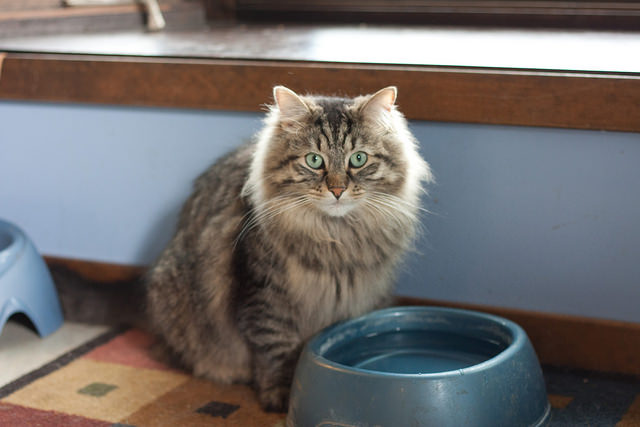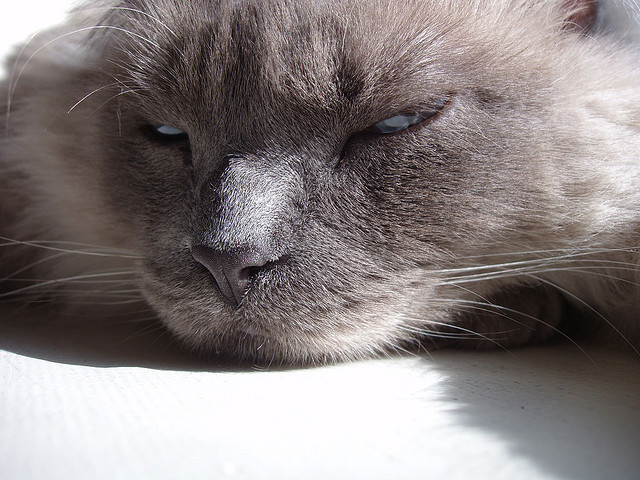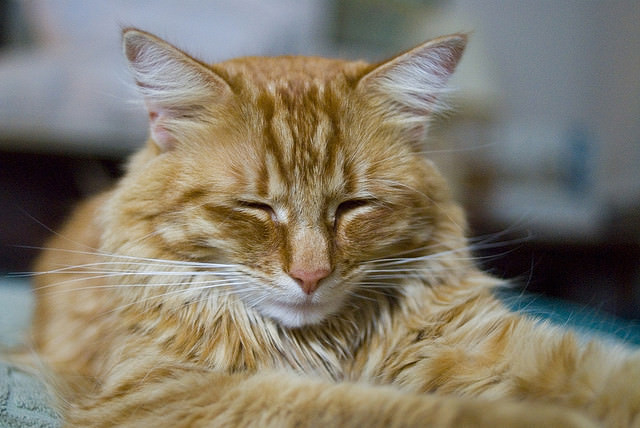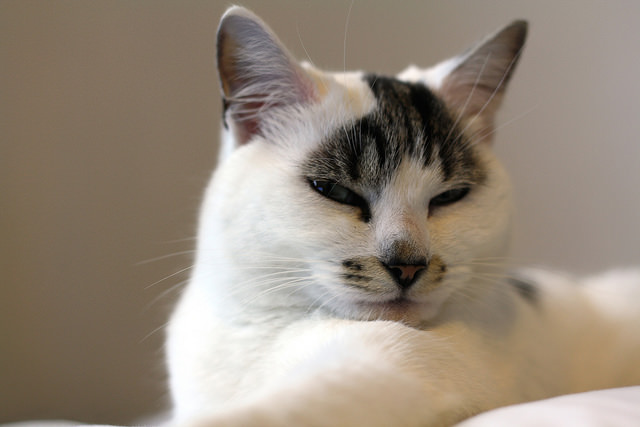Finding out that your cat has diabetes can be heartbreaking, shocking, and scary. I know because I have been there. When my senior cat, Pippi, was diagnosed in 2012 I was overwhelmed with the realization that I didn’t know the first thing about the illness that was causing her so much distress. I’m a person who likes to have all of the information in all aspects of my life. It gives me a sense of control to understand the most minute details. So when our veterinarian made the diagnosis, I scrambled to learn all the details in order to give Pip the best chance at a happy, healthy, comfortable future. I’m sharing what I learned with you, so you can skip the endless websites, veterinary journals, clinical studies, and forums.

Image Source: jahofker via Flickr.com
Warning Signs
We recently published an article about the common signs of feline diabetes. Out of the nine signs mentioned in the article, Pippi immediately showed six of them.
- Increased Thirst. When I woke up in the morning, her water bowl (which I had just filled to the brim with fresh water the night before) was empty.
- Increased Urination. The litter in her box was completely soaked through with urine, requiring a full litter change instead of a simple scooping.
- Increased Appetite. She was absolutely ravenous for food.
- Weight Loss. Even though she was eating more food that normal, she became visibly skinnier.
- Urinating Outside Box. I caught her peeing in the corner of the living room several times.
- Lethargy. Pippi was 15 years old at the time of her diagnosis, so even though she wasn’t the most spry and active cat to begin with, she did have a naturally social and chatty personality. It was a big clue when she suddenly didn’t want to leave her bed.

Image Source: Janice Waltzer via Flickr.com
What Exactly Is Feline Diabetes?
Your cat’s cells need sugar in order to do their jobs– make new cell walls, create energy, make proteins, etc. The energy created by the cells helps her body perform all of its basic functions like signaling her nerves, facilitating blood flow, and breathing. She is able to get the sugar she needs from her food– her body will transfer the carbohydrates and proteins into sugar. But your cat needs less carbohydrates than you do, and the average feline diet has far too many. When she can’t use the surplus carbohydrates in her food, her body will transfer them into sugar. The sugar-overload can cause problems as her liver, kidneys, and circulatory system work harder to move the sugar out of her body. Eventually, her liver will max out its storage capabilities, her kidneys won’t be able to flush any more sugar out through her urine, and her blood system will be forced to store it.

Image Source: Dwight Sipler via Flickr.com
The tricky part is that the cells can’t use the sugar in your cat’s body unless it is accompanied by insulin. In fact, when her cells don’t have enough sugar to do their jobs, the insulin tracks down the sugar and brings it to the cells! Insulin is a hormone that the cells in your cat’s pancreas create naturally when she is healthy. Your cat may stop producing enough insulin if the cells in her pancreas become damaged. This can happen as a result of trauma, an infection, a virus, or certain medications. These days, damage is commonly caused by longterm bad diets. Her body may simply become worn out from years of processing a diet that is too high in carbohydrates (and therefore sugar). When her insulin-producing cells stop working because of the damage to her pancreas, there won’t be enough insulin to help the sugar into the deficient cells, which means her cells won’t be able to do all of their important jobs.
This series of events is called diabetes.

Image Source: Chris Isherwood via Flickr.com
Why The Symptoms?
We see the common warning signs of diabetes when the cells and organs aren’t able to do their jobs.
- The kidneys try to filter excess sugar out through your cat’s urine. This will cause her to urinate more frequently and in higher volumes.
- In order to produce the extra urine, water will be drawn from other parts of her body, which will make her very thirsty. She’ll drink extra water to compensate, since hydration is critical to all of her bodily functions.
- Her hunger response will be triggered by her sugar-deficient cells, causing her to become very hungry. Her cells won’t understand that the reason they aren’t getting sugar is actually because of a lack of insulin. It’s a vicious cycle though because more food means even more sugar in the blood stream.
- Weight loss happens when the body begins to use fat stores because it thinks it’s starving. The fats help maintain the vital functions of the brain, lungs, and heart.
Understanding the warning signs and knowing what is happening in your cat’s body if she is diagnosed with feline diabetes is a great start but it is only the beginning. Read Part 2 of this series to learn more about how feline diabetes is diagnosed, how it can be treated, and methods for prevention.
